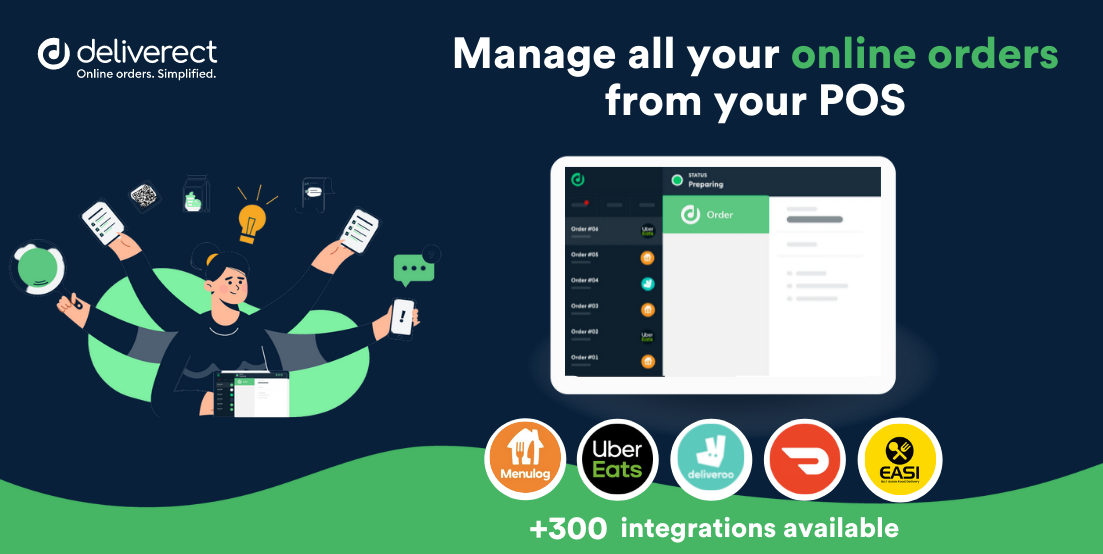Deliverect is a SaaS company that simplifies online food delivery management. Deliverect seamlessly integrates online orders from food delivery channels (Uber Eats, Menulog, Deliveroo, and Doordash etc.), allowing 20,000 establishments to improve operational service and increase customer satisfaction. Operating in over 40 markets around the world, Deliverect is trusted by restaurant and FMCGs such as Taco Bell, Burger King, and Unilever, as well as small and midsize restaurants and dark kitchens around the world. To find out more information visit www.deliverect.com.
The delivery is in the detail: Designing menus that build loyal customers

As the world of food delivery grows, so too must the menus of QSRs that want to stay ahead of the game.
The menu is one of the most important aspects of running a successful restaurant. It can make or break a customer's dining experience, and can ultimately determine whether or not they will return. For quick-service restaurants (QSRs), which rely heavily on delivery services, it is especially important to have a well-crafted menu that will appeal to customers.
Whether that's offering a limited time only (LTO) menu item that's only available for delivery, or designing specific menus for breakfast, lunch and dinner, menu engineering provides QSRs with the ability to take full control of their online menus. In doing so, they can create an optimal dining experience for their customers that will keep them coming back for more.
So, what exactly is menu engineering? It's the process of analysing and optimising a restaurant's menu in order to achieve specific goals. This can include increasing sales of certain items, improving overall profitability, or reducing food waste. QSRs can use menu engineering to create targeted menus for delivery that will appeal to customers and boost sales.
For QSRs that have delivery as a key part of their business, menu engineering can be a game-changer. By creating specific menus for delivery, QSRs can increase sales and profits, while also reduce food waste. Plus, by working with a good menu engineering provider, QSRs can get detailed insights into how their menu is performing and make changes accordingly.
Menus for multiple locations
Updating menus can be time-consuming and costly, especially for QSRs that have multiple locations. Menu engineering provides a solution to this problem by allowing QSRs to create and manage menus for multiple locations from one central platform. This way, QSRs can make sure that all of their locations are using the same menu, and can make changes as needed.
Deliverect is a prime example of a platform that offers this type of functionality. Using Deliverect’s consolidated menu engineering feature, QSRs can update menus in all of their stores and online channels with a single click. This not only saves time, but also ensures that all locations are using the same, up-to-date menu.
Another benefit of Deliverect's menu engineering solution is that it provides QSRs with more efficient menu overviews. QSRs can see all of their menus in one place, and can easily compare and contrast different menu options. This way, business owners can make informed decisions about what to include on their menu, and can better manage their inventory.
These elements are especially important for delivery, where QSRs need to be able to quickly and easily update their menus. Delivery is a fast-paced business, and QSRs need to be able to keep up with the changing demands of customers.
Promoting creativity in QSRs
While menu engineering can be a powerful tool for boosting sales and profits, it can also promote creativity in QSRs. By allowing QSRs to experiment with different menu options, menu engineering can help them find new and innovative ways to promote their brand.
For example, Deliverect's menu engineering solution allows QSRs to create custom menus for specific occasions, such as holidays or other special events.
Additionally, menu engineering can help QSRs to create promotions that will appeal to specific customer groups. For example, QSRs can create "kids eat free" promotions that will appeal to families with young children. Specials like this can help QSRs to attract new customers, and can also increase repeat business from existing customers.
Tried and tested tips
As a trusted partner to many QSRs, Deliverect has a wealth of experience in online menu engineering:
- Start with your most popular items: This will ensure that your menu is appealing to customers and will help to boost sales.
- Include pictures: Customers want to see what they're ordering, so make sure to include high-resolution pictures of your food items.
- Focus on a few items: Don't try to include too many items on your menu – focus on a few key items that you do well.
- Make your menu easy to navigate: Customers should be able to find what they're looking for quickly and easily.
- Update your menu regularly: Keep your menu up-to-date with the latest changes to your offerings.
Final thoughts
Delivery is only going to become more popular in the QSR space, so it's important for QSRs to have a menu engineering strategy in place. By creating targeted menus for delivery, QSRs can boost sales and profits, while also building brand loyalty. Plus, by using a platform like Deliverect, QSRs can manage their menus more efficiently and get detailed insights into menu performance.
Other Articles

Online engagement: the secret sauce of today’s successful QSRs

Tried and tested online menu ideas to boost delivery orders

How a tech startup is helping QSR brands succeed in the delivery business


